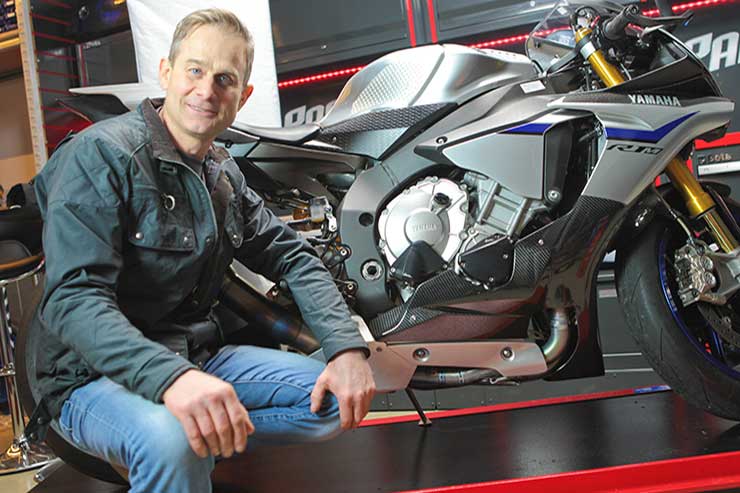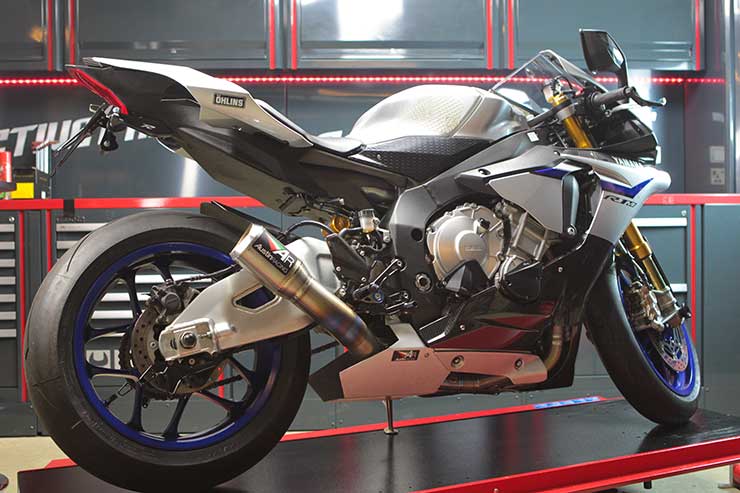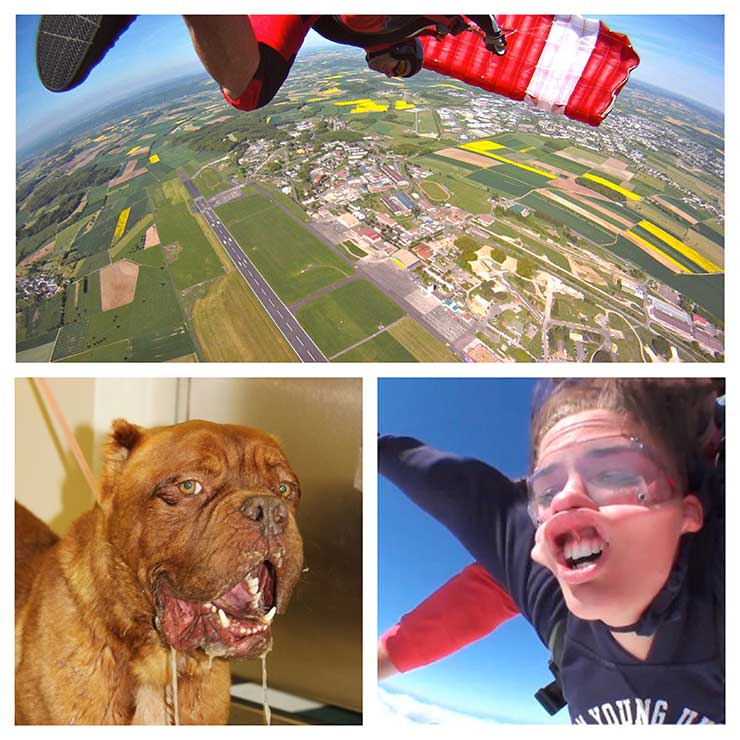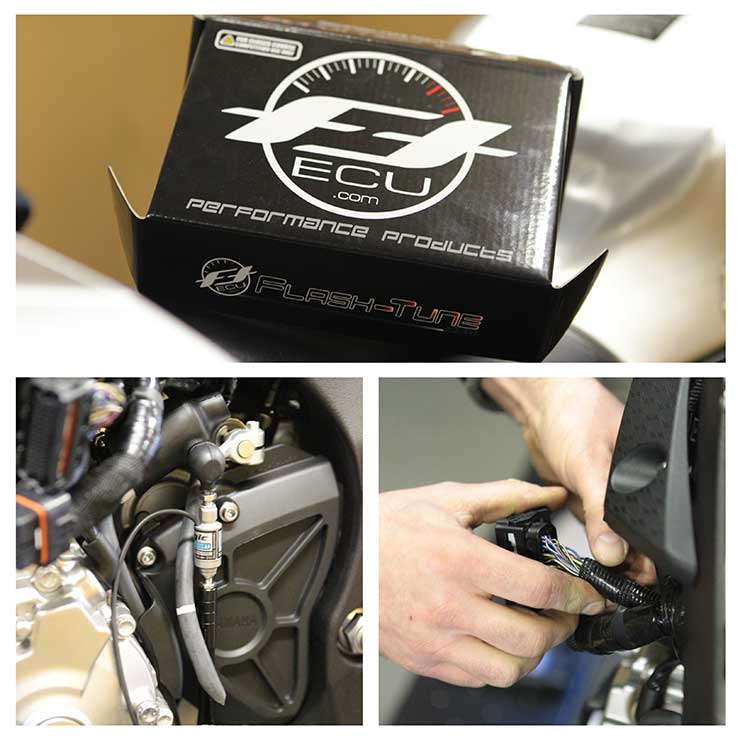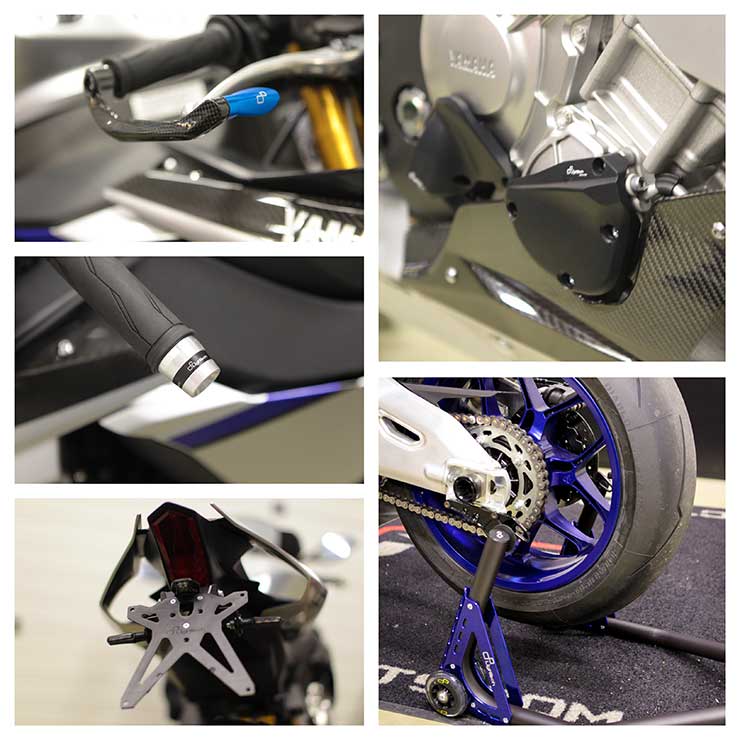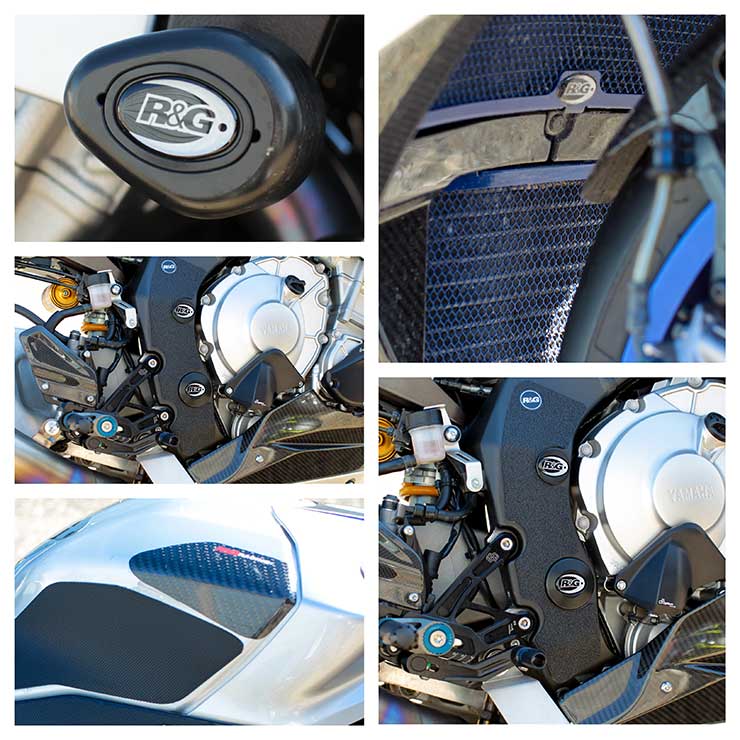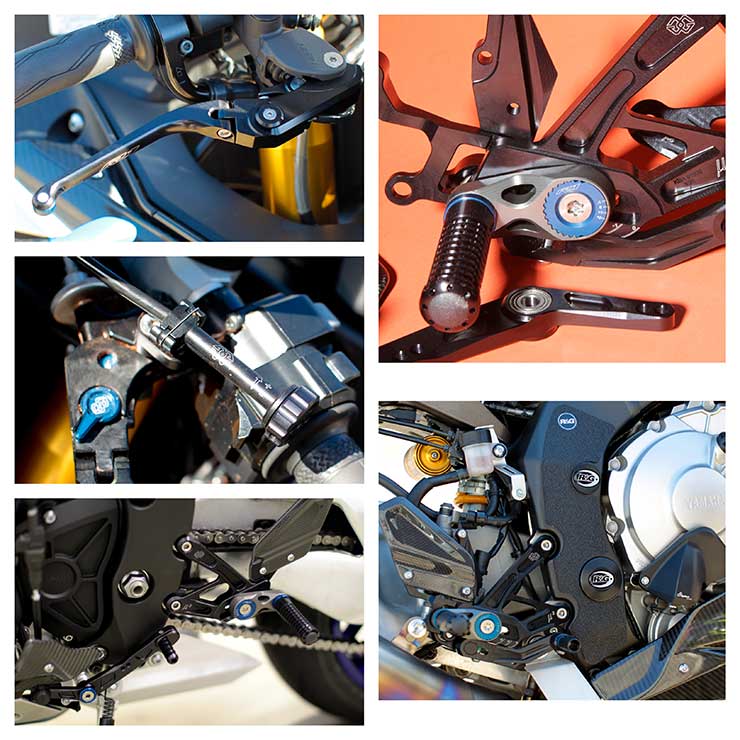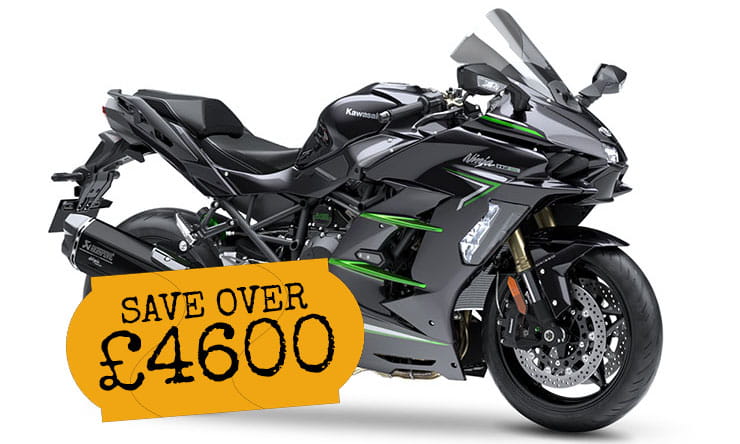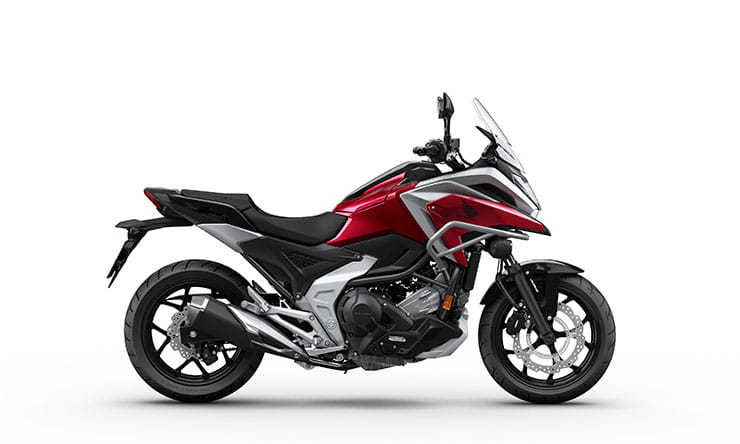Being tall (6ft) I find the standard screen doesn't offer enough protection from so I've fitted the Endurance screen available as a £110 option from Yamaha official accessories line-up. Tucked in behind the new screen now the quote becomes more relevant, it’s all more chilled and the chaos is reduced.
I get the same effect from exploring the various settings on the bike’s semi active Ohlin’s suspension. At first I felt like I was cheating myself, surely if you have the most advanced Ohlin’s technology, that would be the most optimal, right?
The most interesting part I discovered by playing with the suspension settings was the manual setting worked best for me on the road. I had to tell myself that having Ohlin’s is still better without the electronics turned on.
Then when I was riding the standard R1 at Mireval Dunlop's proving ground in France last month, the ride was certainly sublime but getting back onto the 'M' proves the Ohlins' worth. As the R1M is a race bike for the road it is heavily track focused although I found the lowest electronic setting initially smoothed out the bumps for my old damaged back. I adjusted the rebound to minimum while the software sorts out the compression damping. (The compression auto setting only goes half way between max and min which keeps the bike focused but still a touch hard for me).
I started by mirroring the auto settings in the manual menu. I slowly dialled the compression softer, tested it and then dialled back again until I found what felt like the perfect comprise. The bike felt stable and tracks over the bumps in the road with ease. No more Nurofen for the old, knackered back.
In my first long term update of the R1M, I spoke about the full titanium Austin Racing GP1R exhaust and flash mapping with the assistance of Paul Curran at PCR – Performance. Since then, I've been back to my old mate Paul to fit a device called an Active Tuner from Flash Tune.
What is an Active Tuner?
There is always a drop off in power when you add any restriction in an exhaust system so I fitted an Active Tuner to compensate. It's a device that slots into the lambda sensor in the exhaust and feeds information to the ECU.
When adding a decibel killing baffle or swapping out the link pipe, the levels of fuel and air mix change in the exhaust. The Active Tuner will make the necessary adjustments to the keep the fuelling and air mix as close to the base map in the ECU, and it offers peak power regardless of the link pipe or baffle used.
Installing the Active Tuner was a simple and only took a few minutes. The sensor is plugged into the exhaust lambda socket and then plugged into the original lambda plug. It's activated by entering a licence code in the Flash Tune software (already downloaded to the ECU) and then enabled at the click of a button. You then set the fuel and air parameters to keep the bike running close to the base map. Simples.
The bike runs with far less flame on the overrun than before and power is more consistent. The fuel consumption had been affected by putting in the strong map so much so that if I brim the tank the fuel light come on around the 80-mile point. The map remains the same but the bikes' software makes adjustments to ignition etc. to mange the output.
So, when riding better roads I have been toggling to the lower power setting to see if it gets me more economy but so far this has been a false economy and the fuel light burns bright circa 80.
The R1M comes fitted with a quickshift as standard this allows for seamless changing up through the gears. I have tested bikes with downshift assist and really like how stable the bike feels when not using the clutch. There are a number of stand alone shift assist systems on the market and the ECU Flash Tune software allows you to add a two-way sensor replacing the standard shift sensor but it does require another licence for the software. On the plus side, this was also simple to fit.
On the seamless, clutchless downshift the bike blips and thanks to the gorgeous big exhaust system that blip sounds like an angry barking dog.


